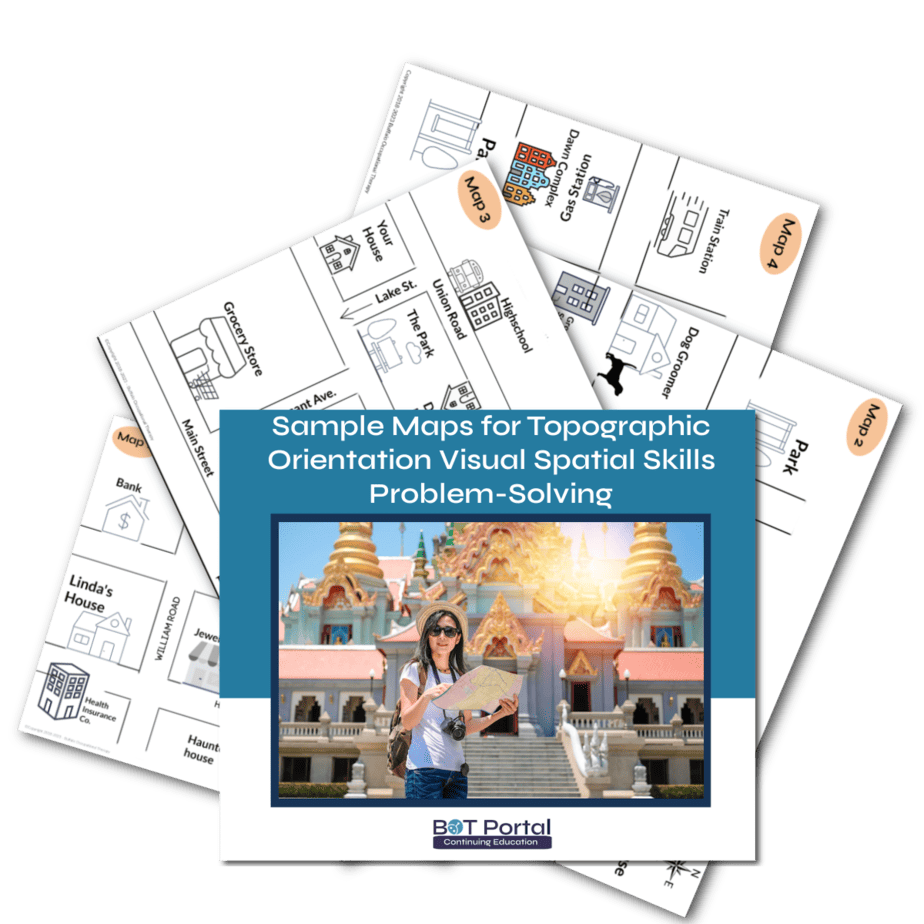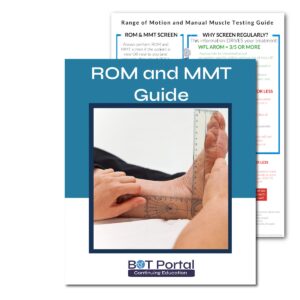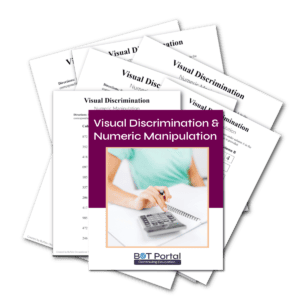Description
Sample Maps for Topographic Orientation Visual Spatial Skills Problem-Solving
Note: These sample maps ideas to inform daily practice. Many research-supported intervention trajectories are shown to promote remediation, and everyone is different! Do your research! This is merely a tool in your toolkit. 🙂
Using sample maps for topographic orientation, visual-spatial skills, and problem-solving during therapy sessions offers a dynamic approach to cognitive development and spatial awareness. These maps serve as versatile tools for therapists to engage clients in interactive activities that stimulate critical thinking, spatial orientation, and problem-solving abilities.
Firstly, incorporating sample maps into therapy sessions provides a tangible and visual representation of spatial environments, allowing clients to explore and navigate simulated landscapes. This hands-on approach fosters active engagement and sensory learning, enhancing the client’s understanding of spatial relationships and geographical features. They encourage clients to practice spatial orientation skills by interpreting visual cues, identifying landmarks, and planning routes. Through guided questioning from the therapist, clients can develop spatial awareness and learn to navigate complex environments with confidence and accuracy.
Secondly, sample maps promote problem-solving abilities by presenting clients with challenges and obstacles to overcome within the spatial context. Therapists can pose questions that require clients to analyze the terrain, devise strategies, and adapt their plans based on changing circumstances, fostering cognitive flexibility and creative problem-solving skills.
Finally, sample maps offer a structured framework for therapists to assess and track clients’ progress in spatial orientation and problem-solving tasks over time. By observing clients’ responses and strategies during map-based activities, therapists can gain insights into their cognitive strengths and areas for improvement, guiding individualized treatment plans and interventions.
What is included?
4 unique maps for various degrees of difficulty
Some other helpful links:
Check out BOT Portal: Resource Site for Occupational Therapy Students and Practitioners
Planning Process for Occupational Therapy Treatment
Planning Process for Occupational Therapy Treatment Continuum




